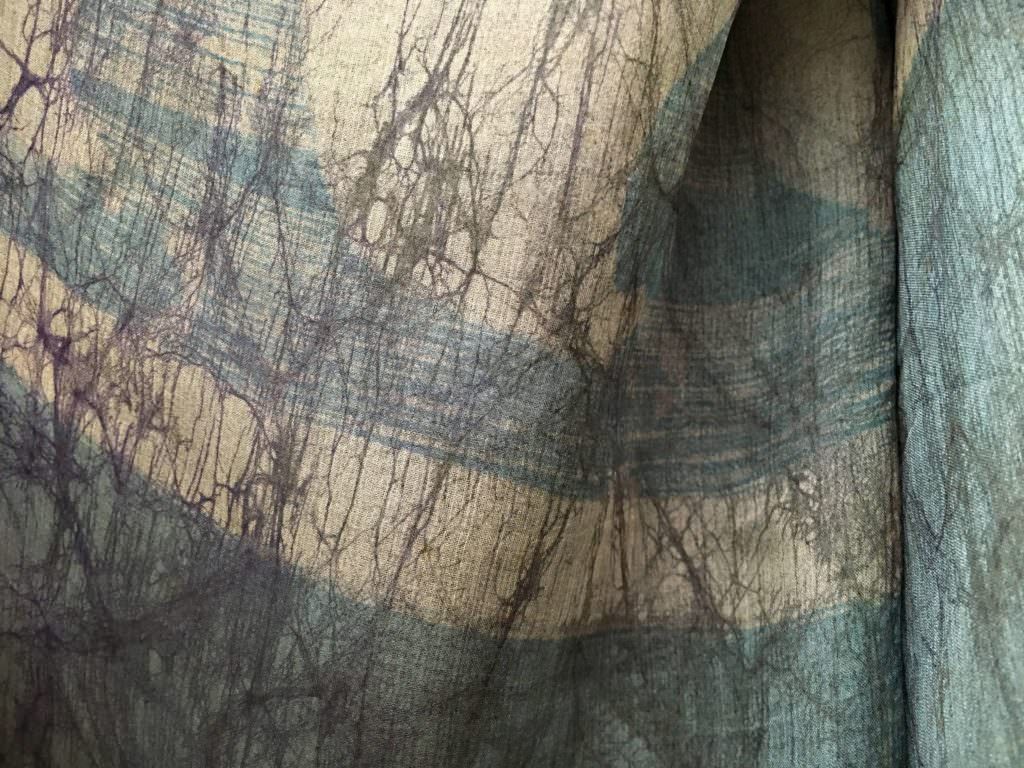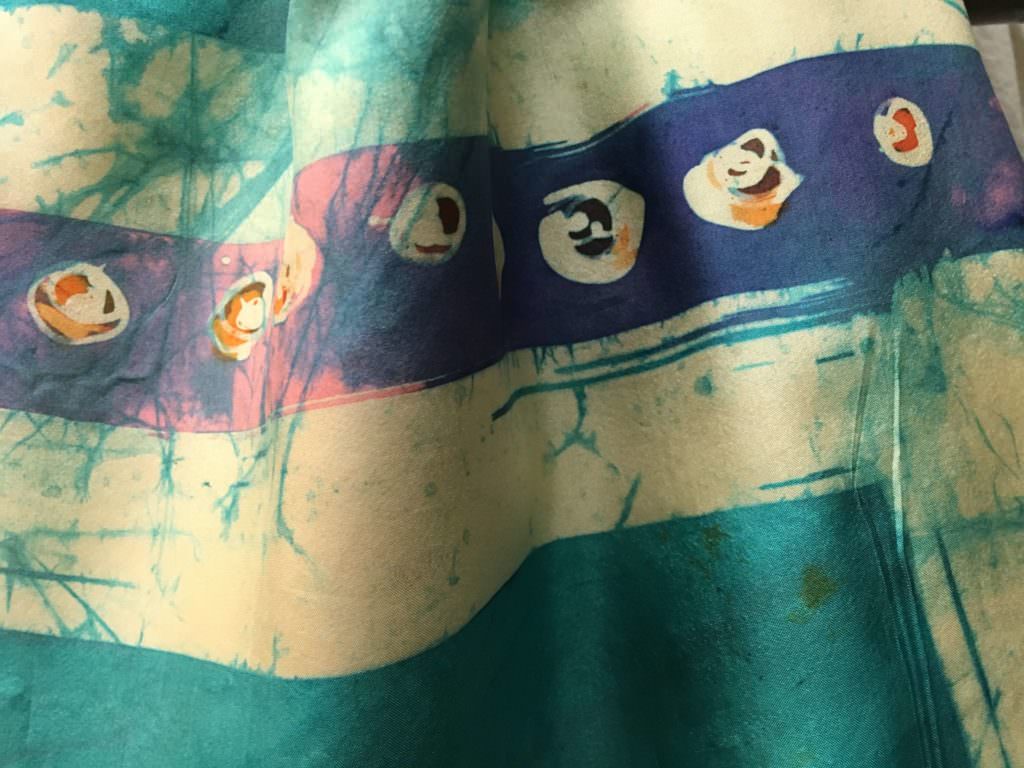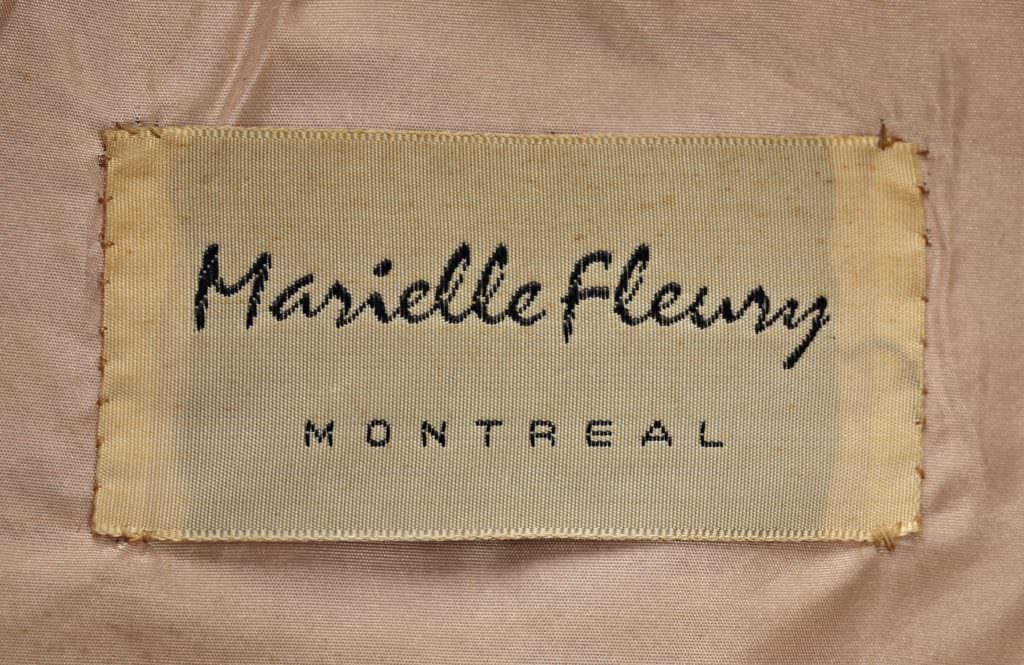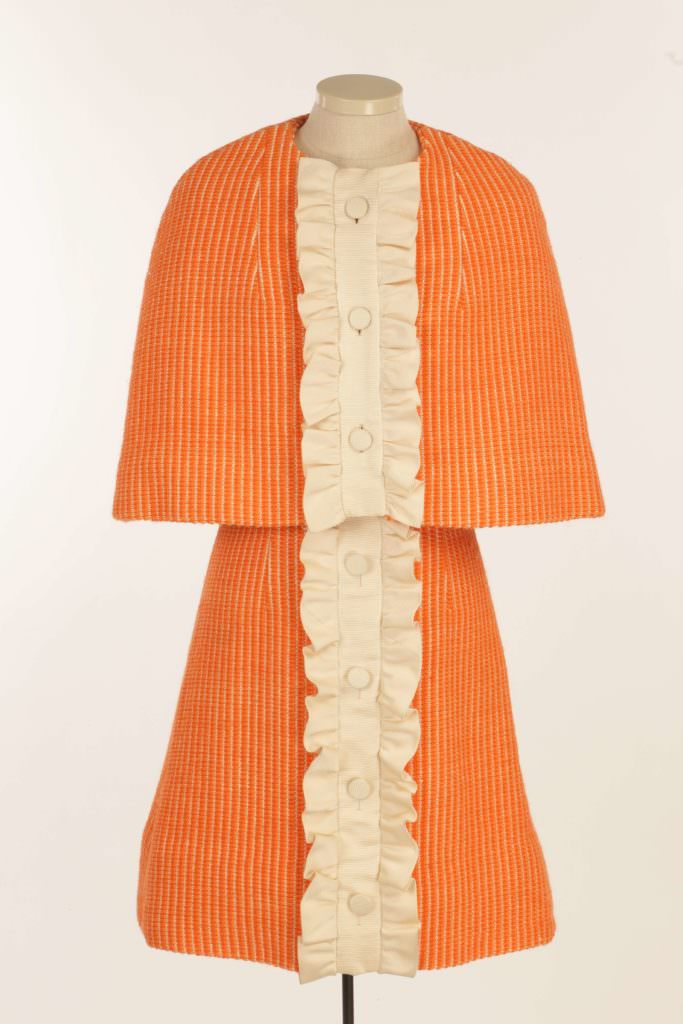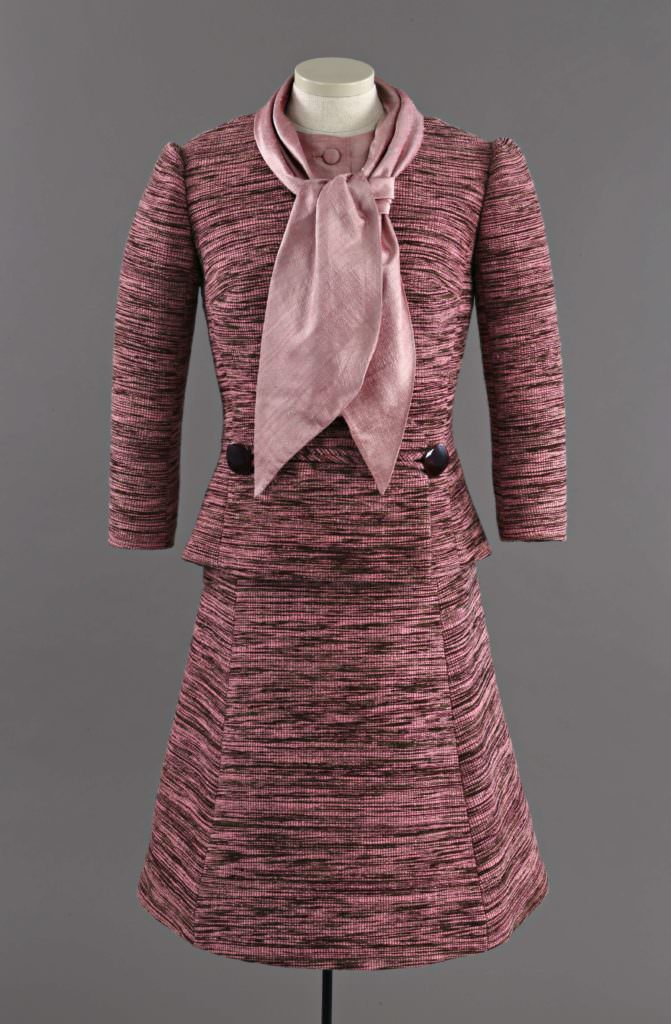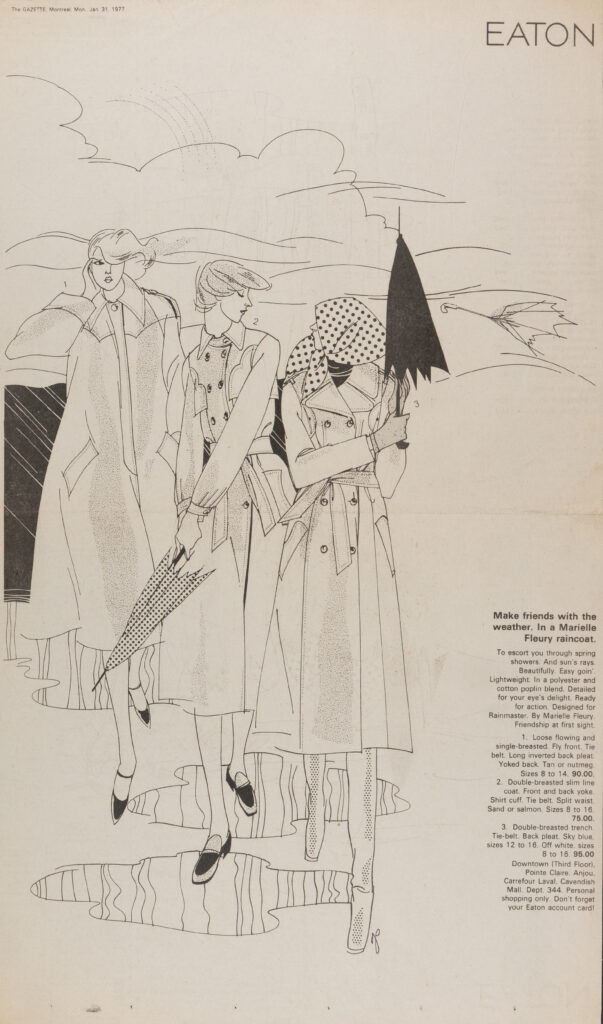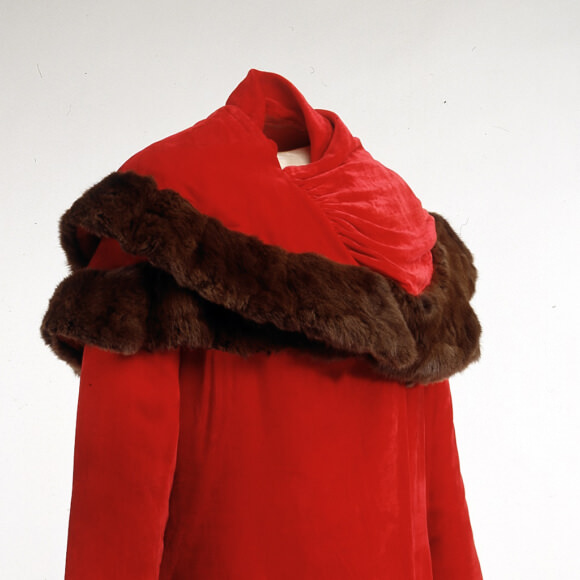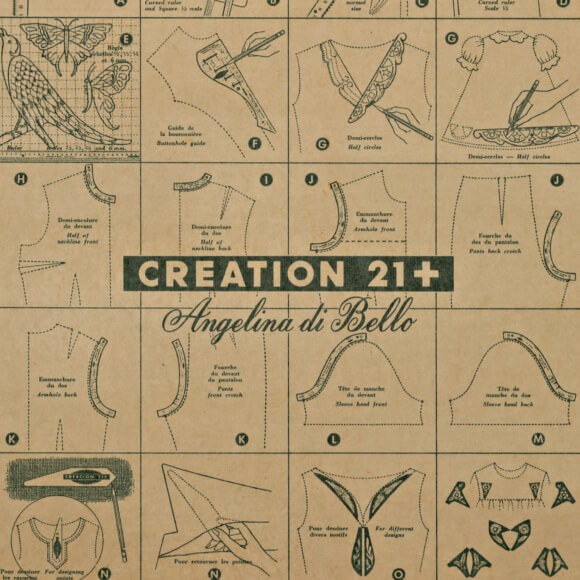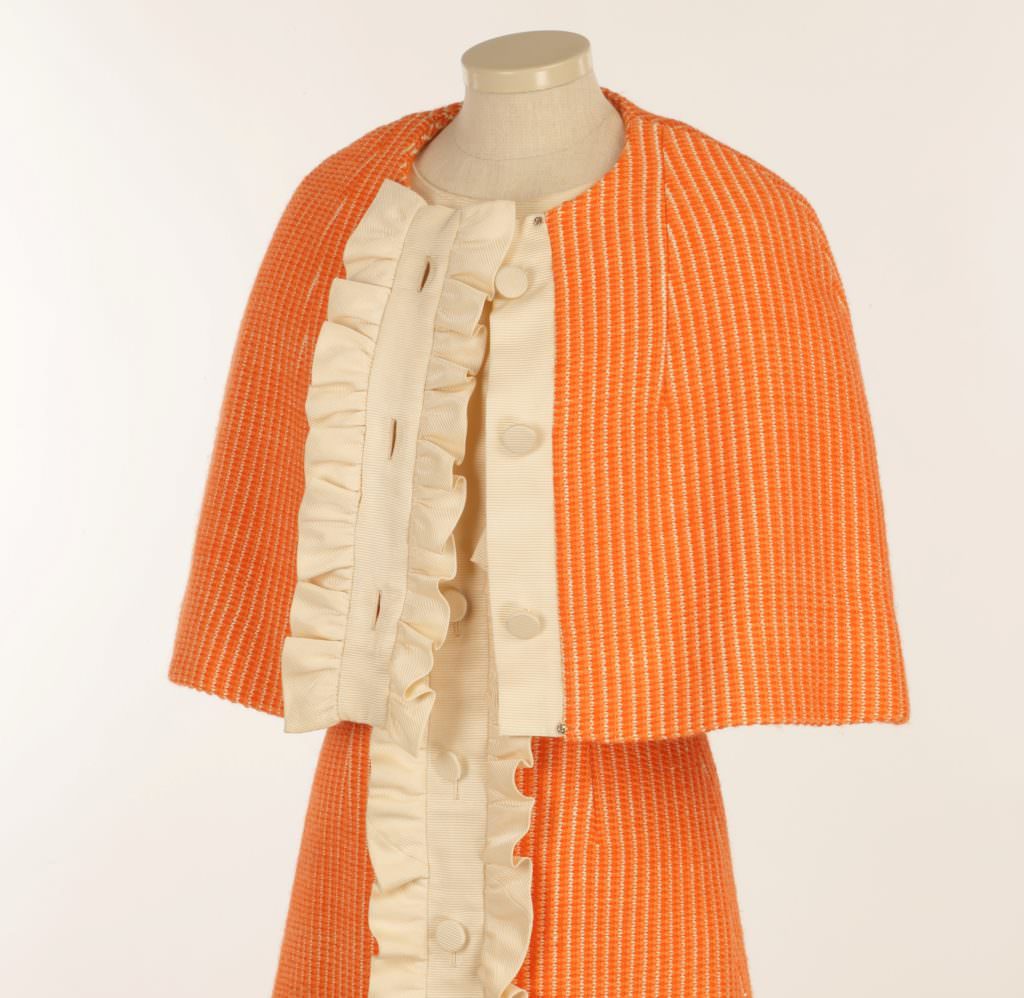
Ensemble (detail), Marielle Fleury, 1966. Gift of Marielle Fleury Boutique Inc., M972.104.4.1-2, McCord Stewart Museum
After four years of study at the École des beaux-arts de Montréal, Marielle Fleury learned dressmaking at the École des métiers commerciaux de Montréal from 1950 to 1951. In 1952, she went to work for Angelina di Bello, a couturier known for her wedding gowns, where she worked primarily doing draping and fittings.
In 1953, at the age of 24, she began her couture business in her parents’ home with the goal of making a name for herself and attracting clients.
She later moved her atelier to St. Denis Street, and then to Sherbrooke Street. Among her first main clients were several television personalities like Gisèle Schmidt, Yvette Brind’Amour, Michèle Tisseyre and Denise Saint-Pierre; Marie-Claire Boucher Drapeau, the wife of Montreal’s mayor; and visual artists like Madeleine Arbour and Marcelle Ferron. She also made costumes for theatrical productions by Marcel Dubé, the Théâtre du Nouveau Monde and the Théâtre du Rideau Vert.
In 1958, Fleury took part in an event that would prove to be life altering: the Salon de l’agriculture in Montreal, where she presented garments made of handwoven fabric produced by rural women from several regions. These coarse linens and woven textiles known as catalognes inspired the young designer, who wanted to experiment with them further.
Quebec was experiencing a growing collective awareness and this movement encouraged Fleury to start making clothing using raw materials emblematic of the province’s cultural and social heritage.
She began working with Lucien Desmarais, a well-known weaver from St. Césaire. Though he was specialized in interior decoration, having primarily produced bedspreads, rugs and curtains, he allied his craft with the dynamic creativity of Marielle Fleury. In 1960, she launched a couture collection designed entirely in handmade fabrics from Lucien Desmarais, Véronique Arsenault and Édith Martin. She enjoyed working as part of a team and invited artists to be part of the creative process by colouring fabric or even finished garments, like the projects she did with Jean-Paul Mousseau and Mario Mérola, for example. She had buttons made out of wood, agate or enamel. She also worked with Thérèse Guité and Gail Lamarche, who produced silk prints and batiks.
FASHIONING EXPO 67 • Marielle Fleury
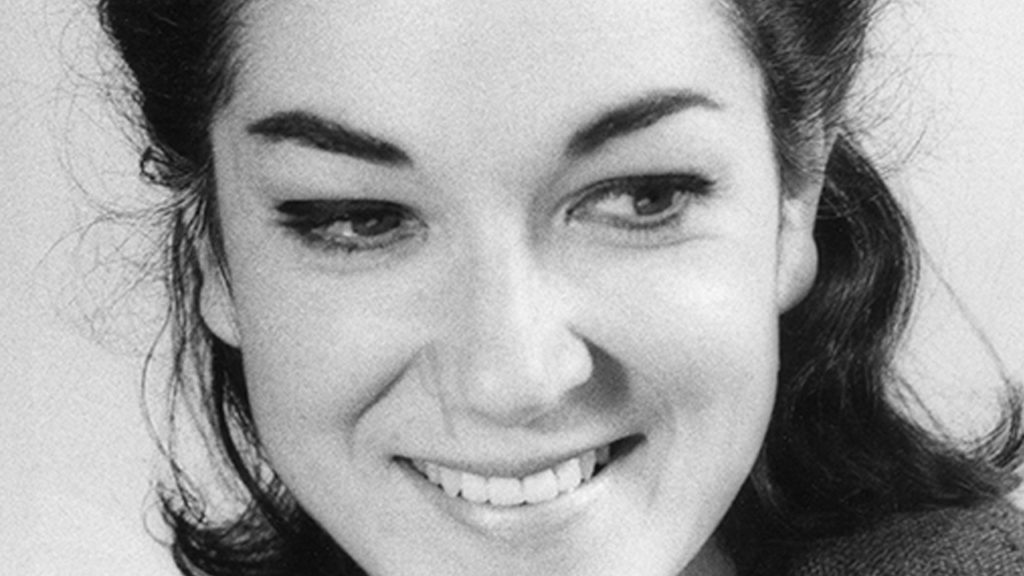
Marielle Fleury, interview conducted for Fashioning Expo 67 exhibition, February 2017, McCord Stewart Museum
She continued to work closely with artists and artisans throughout the 1960s.
Her clothing style was defined by clean, refined lines and simple cuts that highlighted the texture rather than the hand of the cloth and the unfinished look of some garments made of handcrafted textiles. Her method was similar to that of haute couture.
Between 1960 and 1967, Marielle Fleury presented two collections a year at the Ritz‑Carlton hotel. In 1962, she opened a boutique on Crescent Street, across from Mario Di Nardo’s salon and not far from Maurice Brault’s jewellery store. While continuing to run her shop, in 1965 she also designed a collection for manufacturer Irving Samuel. She had a distinct style, creating garments in her favourite materials—tweeds and thick, textured fabrics. This collection earned her the Fashion Designer of the Year award from the International Ladies Garment Workers Union in 1966.
In June of the same year, the Quebec Ministry of Industry and Commerce agreed to organize a European tour that she had proposed several years earlier. Entitled “La mode québécoise en voyage,” the tour was a vehicle to publicize the upcoming 1967 International and Universal Exhibition Exposition in Montreal.
Fleury and Michel Robichaud each created a collection of travel outfits composed of nine models, presenting them in Milan, London, Brussels and Paris.
These shows exported a signature style for Quebec fashion and promoted local pride. Marielle Fleury was then asked to create a uniform for the hostesses of the Atlantic Provinces Pavilion at Expo 67.
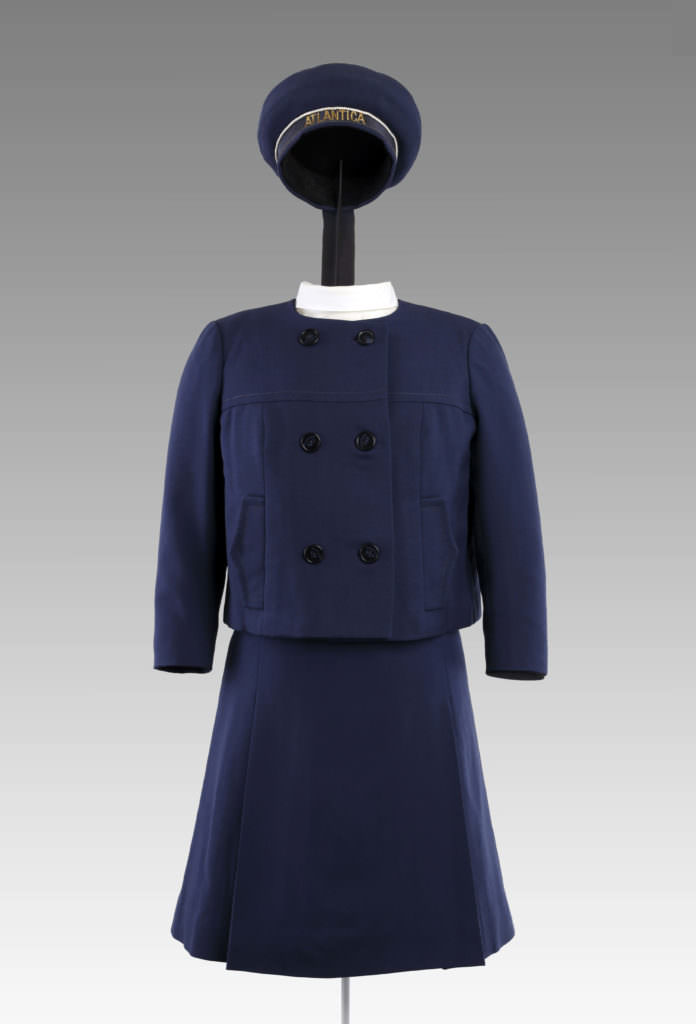
Atlantic Provinces Pavilion Hostess Uniform, Expo 67, Marielle Fleury, 1967. Gift of Sheila De Lory, M969.14.1-2, McCord Stewart Museum
In 1968, Marielle Fleury closed her boutique. In 1969, she was hired by Sport Togs, a company run by Lou Ritchie, where she stayed for 13 years. Working for this manufacturer, whose workshops produced thousands of coats and rainwear with the Rainmaster by Marielle Fleury label, she became known as a coat designer. As a member of the Fashion Designers Association of Canada, in the 1970s she took part in Montreal and Toronto fashion shows, alongside other well-known Quebec and Canadian designers.
From 1983 to 1987, the designer created coats for Utex Corporation and designed jackets and raincoats for Progress. With her extensive experience in the field and proven talent in the fashion industry, in 1990 she became the head of projects and technical quality for LaSalle College’s fashion design program.
For an entire decade until her retirement in 2000, she devoted her attention and talents to training the next generation of Quebec fashion designers. In recognition of her exceptional 47‑year career in fashion, she was awarded the Order of Canada in 2001.
Her archives can be found in Quebec City’s Musée de la civilisation.
Sources
Dumont, Monique. “La révolution tranquille de la mode” (Marielle Fleury and Michel Robichaud), Elle Québec, no 34, June 1992, p. 56-58.
Monahan, Iona. “Fleury a good fit for Order”, The Gazette, 29 May 2001, p. F3.
Lambert, Eleanor. “Marielle Fleury”, in World Fashion : people, places, resources, New York, R. R. Bowker, 1976, p. 189.
Lavigne, Lucie. “Hommage. Marielle Fleury”, Créateurs québécois, edited by l’APDMQ, provided free of charge by Clin d’œil, no 166, and by Flare, vol. 15, no 16, avril. 1994, 15b.
Publication date
01/10/2004
Writing
Dicomode
Share
DownloadRecommended entries
© MCCORD STEWART MUSEUM 2025




